This morning I awake with a start. I hear a loud roaring type noise outside but it does not sound quite like a lion. What the hell is it? I am wide awake. Then I hear a drum beat. I remember now. The camp manager Manambo said that they like to give guests an unusual wake-up call. Yes – they certainly do and it has worked. I am wide awake.

Breakfast is set out by a blazing fire. Porridge is heating and toast is cooking over the charcoal. There is fresh fruit, yoghurt and granola, eggs, toast and homemade jams . Plenty of calories to sustain us while we sit in a vehicle for a few hours. That being said Jane’s Apple watch is telling us every day that we have achieved our exercise goal. There is certainly a lot of bumping around.
We set off at o6 .30 and are heading up to the swamp plains in the hope of finding sable and large herds of topi. All the game here is very skittish and comes as a result of much of the area being inhabited, until taken back by the Tanzanian National Parks in 2006, along with serious poaching issues. We do get reasonably close to some kudu and a black-bellied bustard.
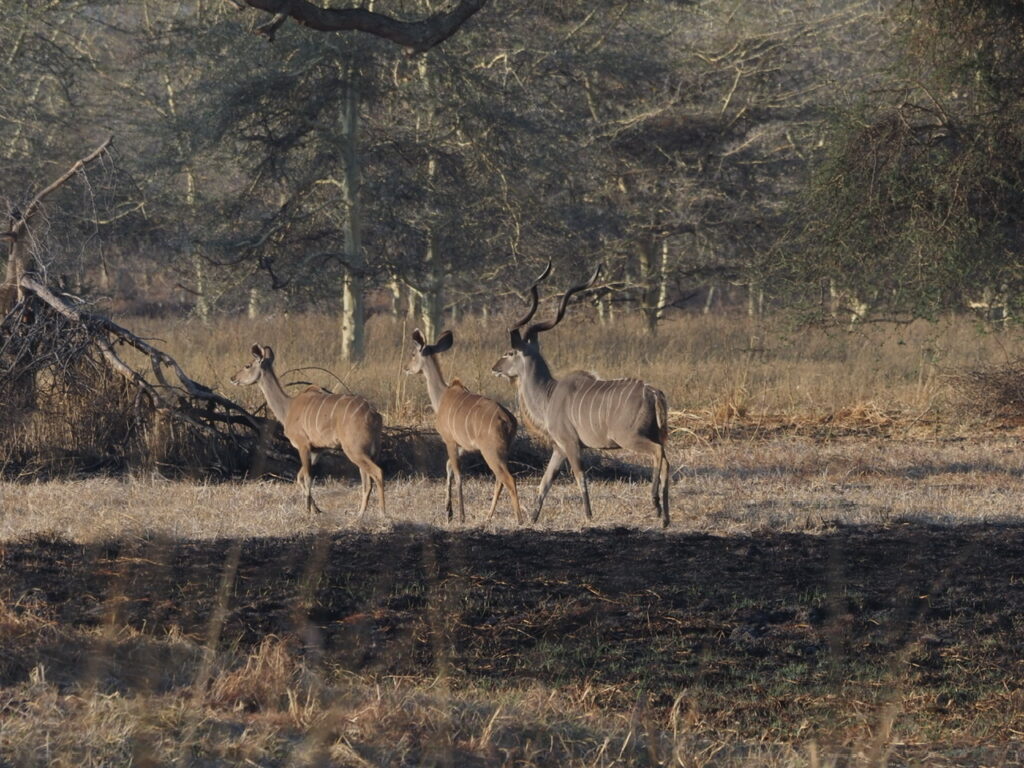

We set up some camera traps by various water-holes and then make our way to the plains. We have to drive slowly and carefully. In the rainy season this whole area is flooded and the ground is very bumpy and difficult to traverse. There are numerous deep channels filled with sticky cotton mud, which lies in wait to engulf unwary vehicles.
We spot a huge herd of topi on the horizon as well as a smaller herd of sable. We decide to approach the sable first. It is incredibly difficult to get close to them and the sun is in the wrong position. We tell our driver Anderson to exercise patience. Let’s park up and see if they will come closer. This is a good tactic and they do finally settle down and start to ignore us. They never come particularly close and the sun is still not in the best position, but they are wonderful to watch. The herd male is continually trying to stop the females heading over to another male. I’ve never seen sable before and did not realise there were herds here. I am exceptionally pleased to have seen them. This is a rare treat and I am more than happy even if the photos are nothing special.
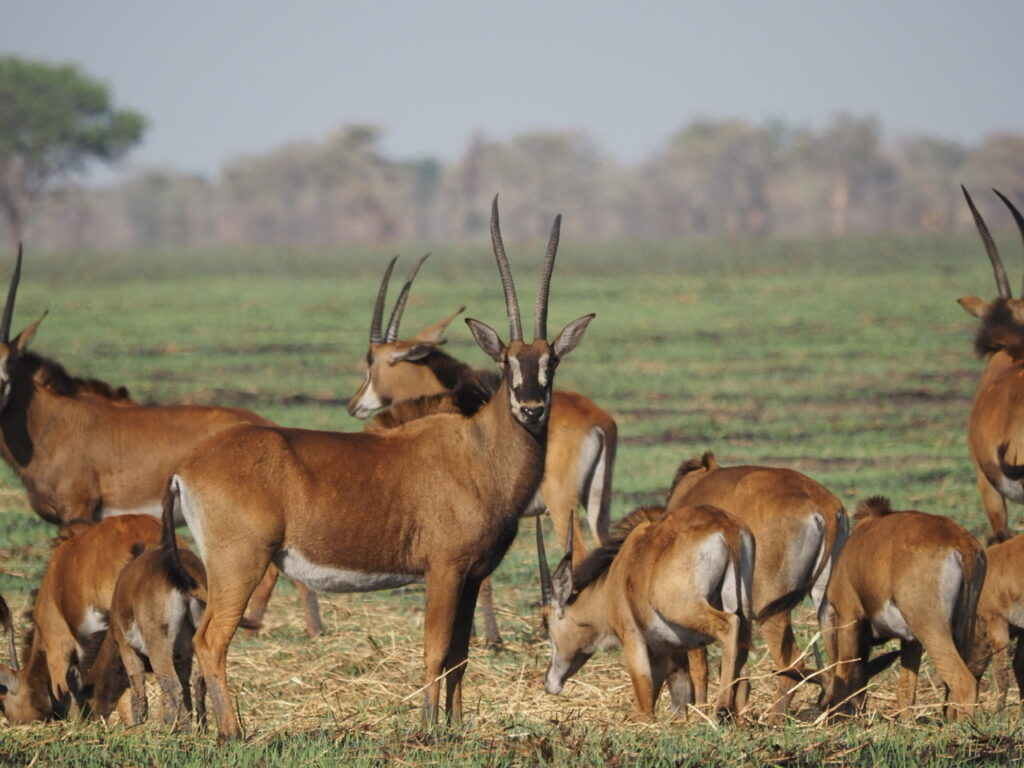
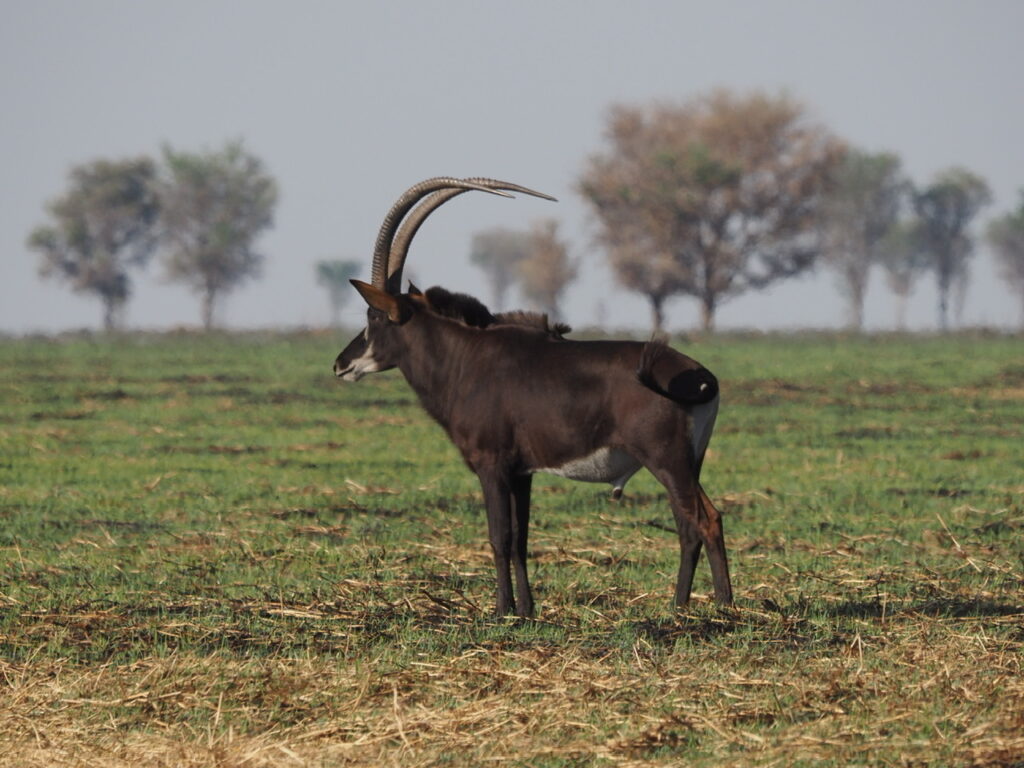
We leave the sable and make our way towards the huge herd of topi. It stretches across the horizon. Tiny dots turn out to be individual animals. There are literally hundreds of them – I have never seen more than 4 or 5 together before. We are finding it hard to make our way to the topi as a water channel is blocking our way.

Anderson keeps driving , stopping occasionally and walking across the channel to test for firmness. He finally finds a good crossing point. He says “Hold on tight” and launches the vehicle at the channel. We make good progress until we ram at full speed into a huge tussock of grass. The vehicle stops dead. I, being the more experienced safari person, had put my foot on the ledge running across the back of the front seat and was firmly wedged. However, Jane had not had such foresight. She lurched forward and nearly went head first onto Anderson’s lap. We were in hysterics. No injuries and it could have been so much worse. We then looked at our new predicament. The left front wheel was half submerged in mud and the bonnet was firmly wedged into a two metre wide mound of grass. Anderson radioed for help. But it did not work, please. Nothing for it but to to get out his machete and commence hacking away at it. It looked absolutely lethal.
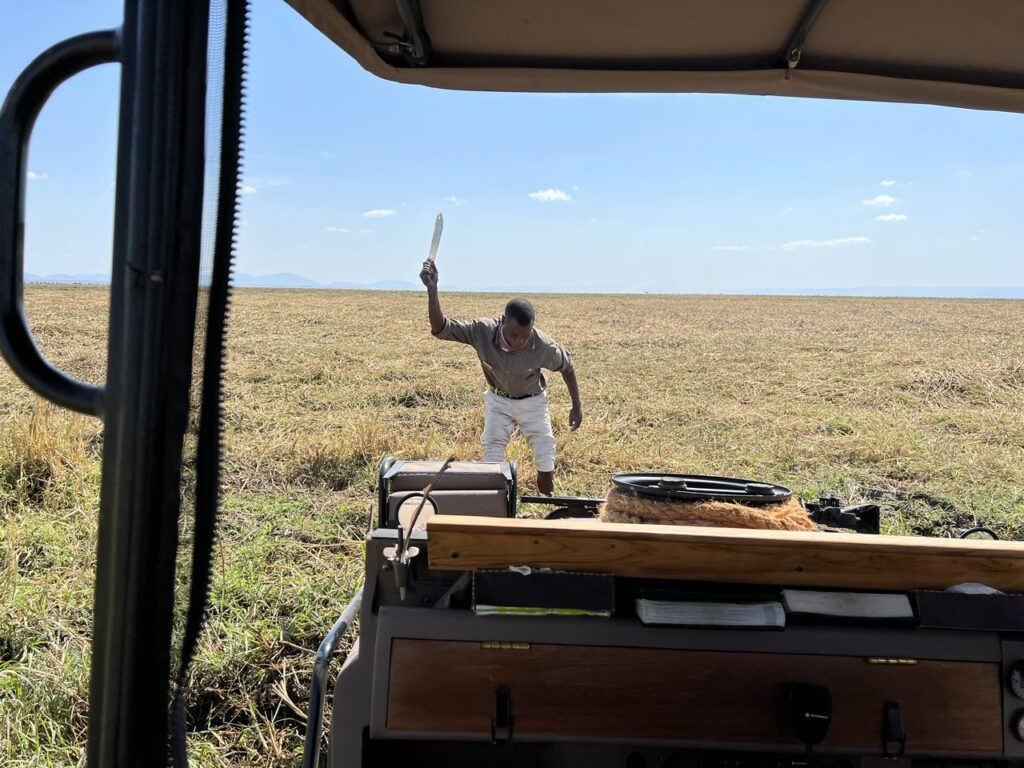
He tries the radio again and this time we make contact. Help is on its way. While we wait an hour or so for help to arrive, we use the time as a photo opportunity. This is a scorchingly hot day 40C and dust devils whirl across the open plains.

The whole horizon is a mirage and taking any sharp photos is hard but there are some good effects to be had. Twelve giraffes were crossing the horizon and I tried taking some shots to demonstrate the heat and drama of the scenery.
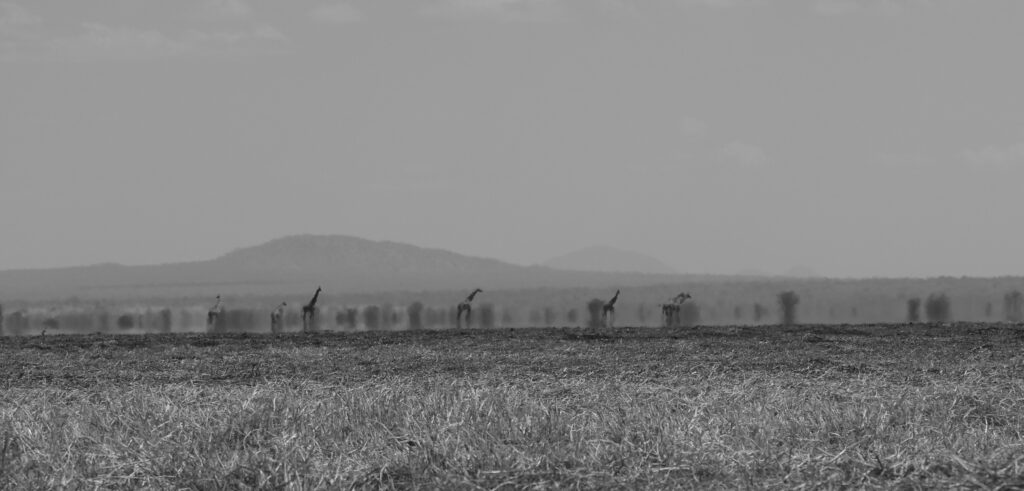


Help finally appears in the shape of another converted Land Rover. These vehicles look like a 1930’s knock back and we expect Dick Dastardly and Muttley to emerge at any moment.
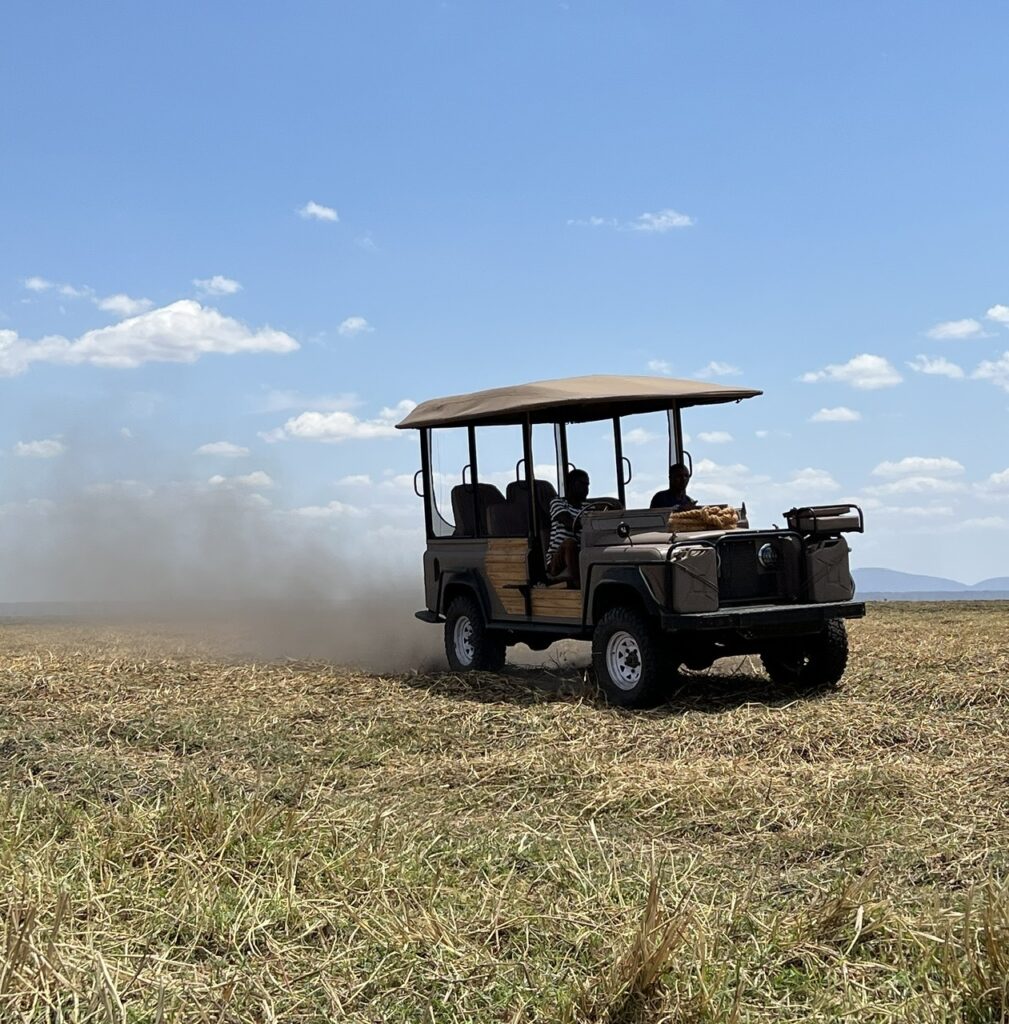
A winch is attached to the new vehicle and only results in the new vehicle being dragged towards us. Back to Plan A which is to hack away the grass. It now gets even more dangerous as Nyati pulls back the tuft with his hands as Anderson hacks with his machete. We don’t really like to watch but there is a grim fascination to it and his machete skills are impressive. A third guy stands by with an AK47 rifle and we’re not quite sure what his role was.

Eventually the grass is removed and we can try winching again. It doesn’t quite go according to plan. We definitely move but now are at a 45 degree angle with the left rear wheel stuck in the hole. We are asked to get out. I think it is considered too dangerous for us to remain where we are and we are only too happy to go and sit in the rescue vehicle.
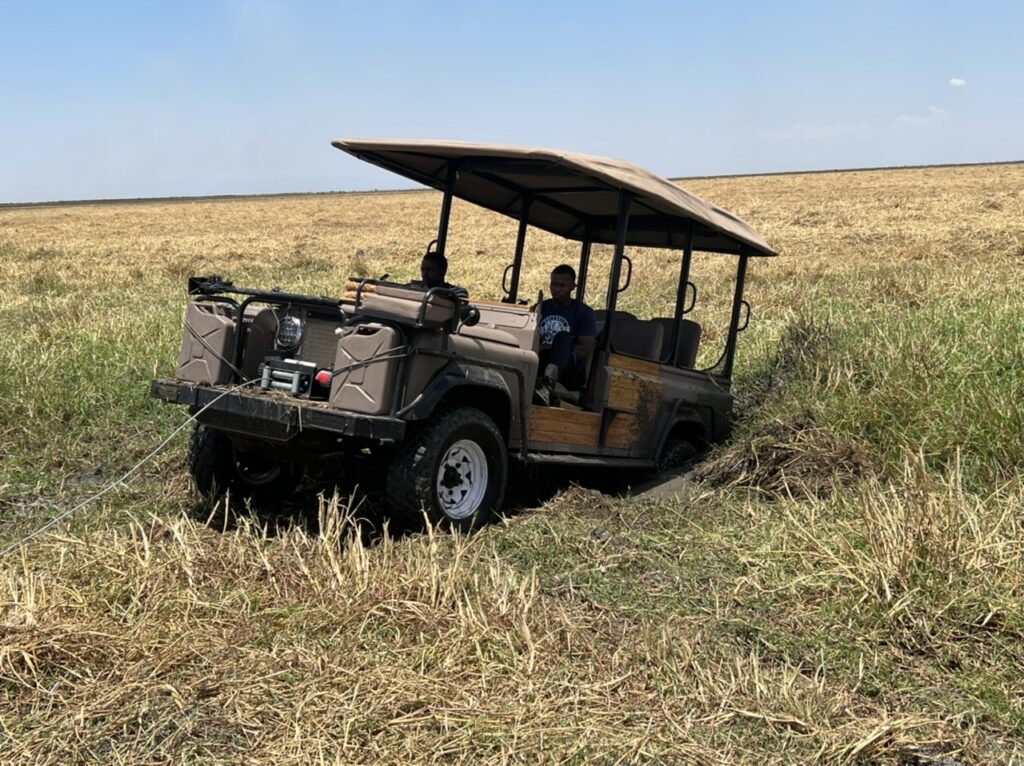
A combination of winching and acceleration finally frees our vehicle. We climb back in and set off back to camp. The drive is very slow and bumpy – an hour and a half over truly horrible cracked earth terrain. We arrive back in camp after three and are very hungry. Dinner is early at 18.30 as we are going out on a night drive.
As we are leaving camp we spot a chameleon in a nearby shrub.

We also catch glimpses of a nightjar, civet, Verroux’s eagle owl, genet, 2 honey badgers, a wild cat, a bat-eared fox, a porcupine that scurried behind the vehicle, a white-tailed mongoose, impala, lapwings and chick and a spotted thick-knee that got caught in a thorny acacia bush. It was so upsetting. It was entangled in the branches and kept falling and getting caught more and more on the lethally spiky branches. Our guides rescued it and pulled off all the spiky twigs. They released it and miraculously it seemed to have survived its ordeal unscathed.

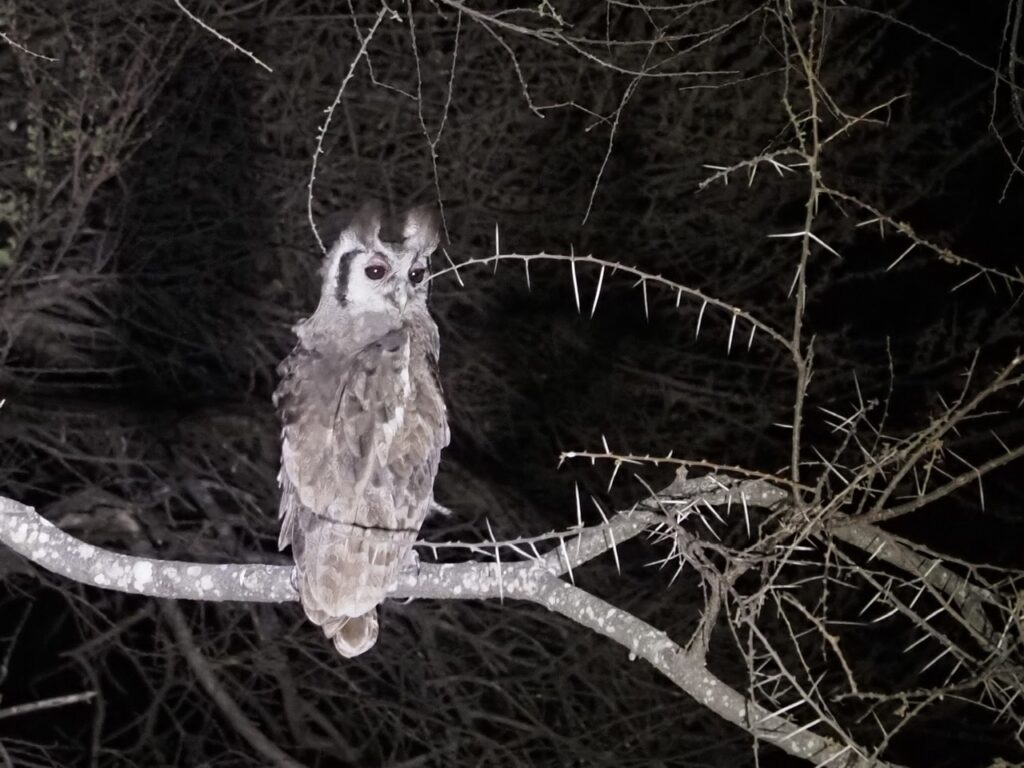

We both slept exceptionally well. It was a long day!

Leave a Reply